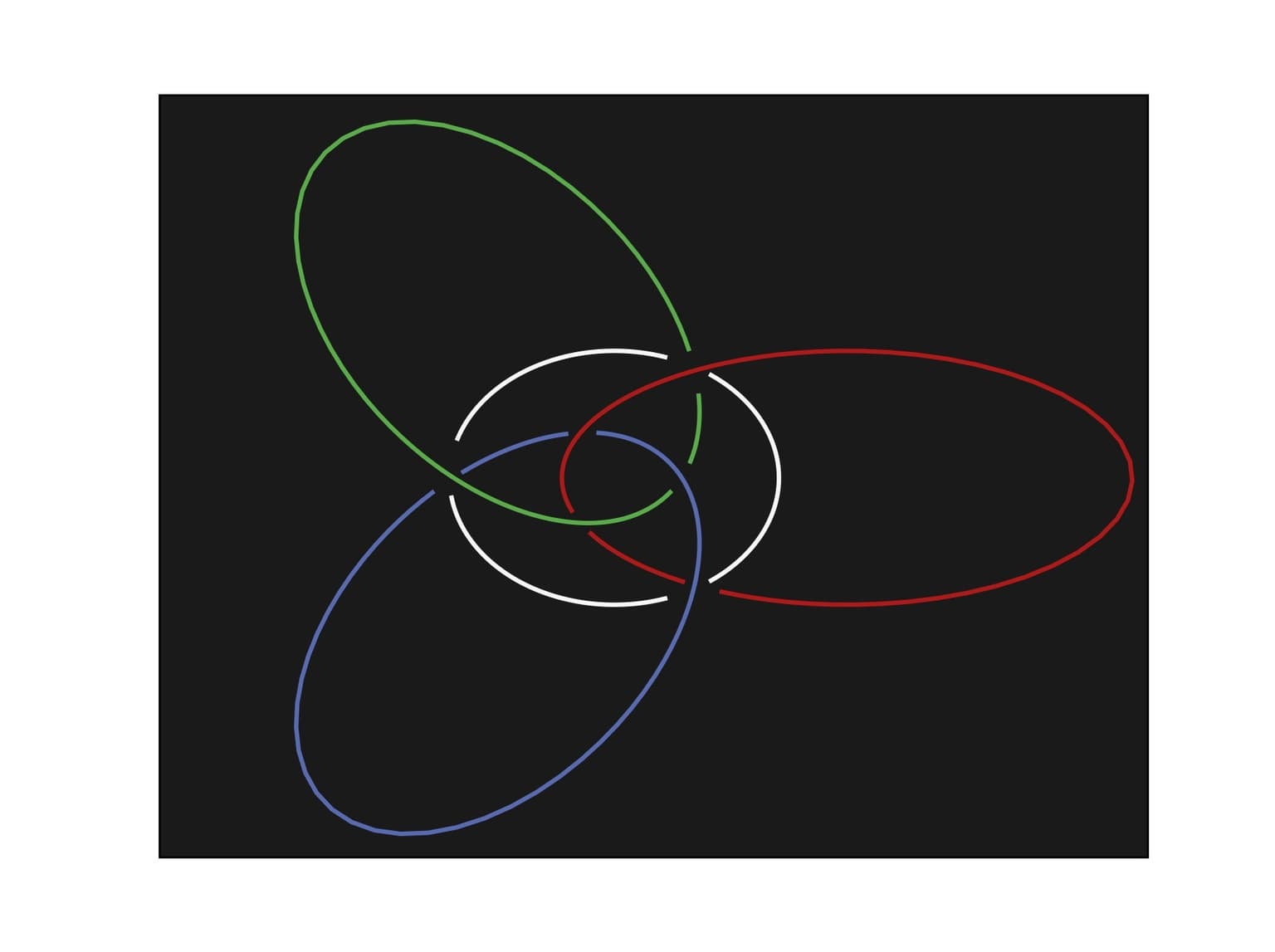Paige MacDonald and Michael Klug
Artists
Paige MacDonald and Michael Klug
Student of Mathematics
University of California, Berkeley
Berkeley, California, USA
Statement
This work displays a combination of two different pieces of mathematics - the Platonic solids and the Hopf fibration. The Ancient Greeks recognized that there are exactly five Platonic solids - the tetrahedron, hexahedron (cube), octahedron, dodecahedron, and icosahedron. The Hopf fibration, discovered by Heinz Hopf in 1931, gives a way of decomposing the 3-sphere into disjoint circles that are parameterized by points on a 2-sphere. For each platonic solid we chose the vertices of that solid on the 2-sphere and looked at the inverse image of those vertices under the Hopf fibration. We then used stereographic projection to project onto 3-dimensional space, and then projected the resulting image onto a plane.
Artworks

Tetrahedron Hopf
60 x 75 cm
Digital Print
2016

Dodecahedron Hopf
60 x 75 cm
Digital Print
2016